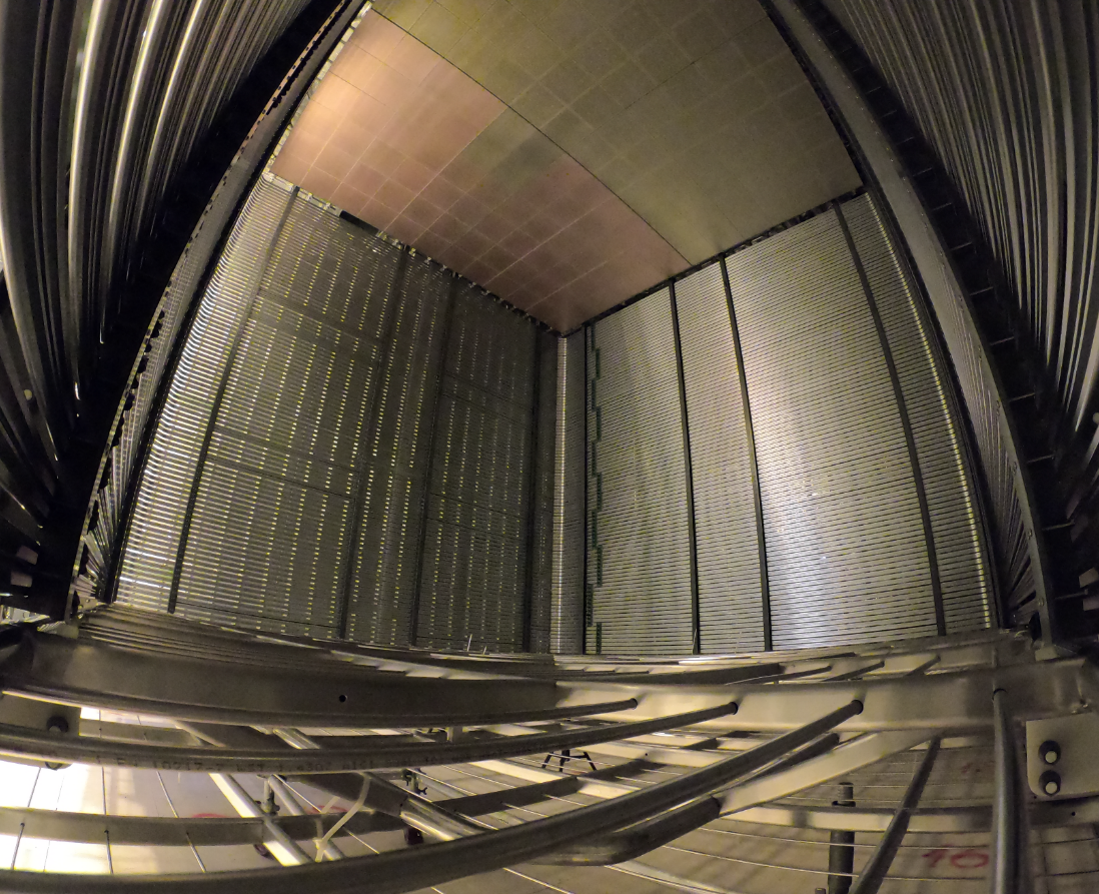Le groupe neutrinos de l’IP2I a une longue expérience de la physique des oscillations des neutrinos et du développement de détecteurs. Il se concentre actuellement sur l’expérience Deep Underground Neutrino (DUNE), à laquelle il contribue depuis ses débuts en 2014, avant la naissance de la collaboration DUNE.
La découverte des oscillations de neutrinos, récompensée par le prix Nobel de physique en 2015, fournit aujourd’hui la seule preuve en physique des particules élémentaires pour la physique au-delà du modèle standard. L’expérience DUNE, hébergée au Long Baseline Neutrino Facility aux États-Unis, va aborder les aspects fondamentaux du mélange et de l’ordonnancement des masses des neutrinos et rechercher la violation de CP dans le secteur des neutrinos. La violation de CP dans les neutrinos pourrait fournir une explication possible de l’asymétrie matière-antimatière observée dans l’univers actuel.
DUNE exploitera un faisceau de neutrinos muoniques se déplaçant sur 1300 km dans la croûte terrestre, du Fermilab au centre de recherche souterrain de Sanford, où un détecteur composé de quatre chambres à dérive à argon liquide de 10 kT est situé à 1500 m sous terre. Un autre détecteur au Fermilab mesure le faisceau de neutrinos après sa production. La comparaison permet de démontrer les changements dans le faisceau de neutrinos, et de mesurer les paramètres d’oscillation des neutrinos. Le faisceau peut être constitué de neutrinos ou d’anti-neutrinos, ce qui permet de rechercher la violation de la CP dans les oscillations des neutrinos et de déterminer la hiérarchie de masse des neutrinos, grâce aux effets de la matière sur les oscillations de neutrinos se produisant dans la croûte terrestre.
DUNE recherchera également des phénomènes rares, prévus par les théories de la Grande Unification, tels que la désintégration des protons et les oscillations neutron-antineutron. Il étudiera également les neutrinos cosmiques et solaires, et se penchera sur les sursauts de neutrinos des supernovae avec des statistiques, une précision temporelle et une sensibilité d’identification des neutrinos sans précédent.
Le groupe neutrinos de l’IP2I mène depuis 2006 un programme de R&D intensif sur la lecture des détecteurs TPC à argon liquide, également soutenu par le LABEX LIO. Il a apporté d’importantes contributions au DUNE et au prototype double-phase protoDUNE de la plateforme neutrinos du CERN.
